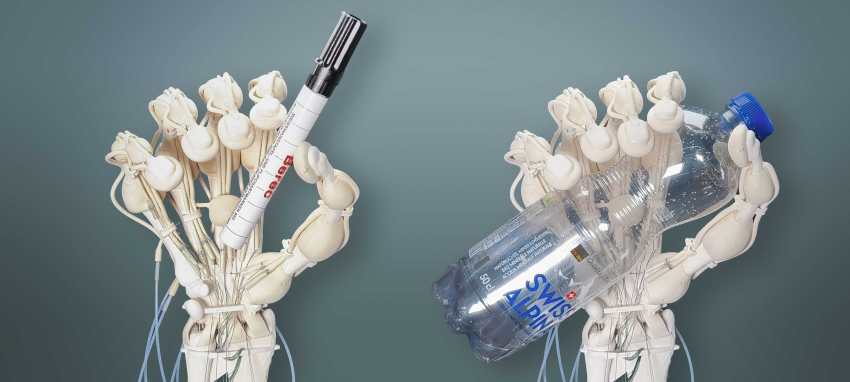
Researchers’ novel AM process 3D prints soft robot hand
By DE Staff
Additive Manufacturing MedicalETH Zurich and MIT spin-off AM technology combines rigid and elastic polymers in single print job.

ETH Zurich’s robotic hand, complete with bones and ligaments, was 3D printed all at once from polymers with varying rigidity and elasticity.
(Photograph: ETH Zurich/Thomas Buchner)
Researchers at ETH Zurich and MIT spin-off, Inkbit, announced the development of 3D-printing technology that allows soft, elastic and rigid materials to be combined in a single print job. As a result, the researchers were able to print a robotic hand complete with bones, ligaments and tendons made of different polymers.
“We wouldn’t have been able to make this hand with the fast-curing polyacrylates we’ve been using in 3D printing so far,” explains Thomas Buchner, a doctoral student in the group of ETH Zurich robotics professor Robert Katzschmann and first author of the study. “We’re now using slow-curing thiolene polymers. These have very good elastic properties and return to their original state much faster after bending than polyacrylates.”
In addition producing the hand’s elastic ligaments, the thiolenes’ stiffness of can be fine-tuned to meet the requirements of soft robots, the researchers say.
To accommodate the use of slow-curing polymers, however, the ETH Zurich research team added a 3D laser scanner to the 3D printing process to check each printed layer for surface irregularities. Instead of smoothing out uneven layers in post-process, as is common with fast-curing polyacrylates, the technology takes the unevenness into account when printing the next layer.
“A feedback mechanism compensates for these irregularities when printing the next layer by calculating any necessary adjustments to the amount of material to be printed in real time and with pinpoint accuracy,” explains Wojciech Matusik, a professor at the Massachusetts Institute of Technology (MIT).
For its part, MIT spin-off Inkbit developed the new printing technology, which the ETH Zurich researchers used to develop robotic applications and optimize the AM technology for use with slow-curing polymers. The researchers from Switzerland and the US have published the technology and their sample applications in the journal Nature.
https://ethz.ch
https://inkbit3d.com
